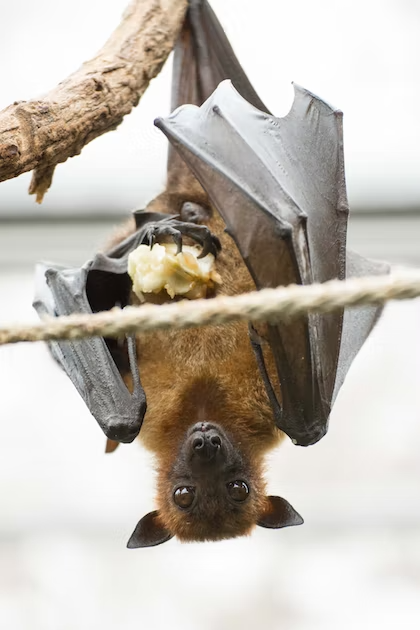Bats are fascinating creatures that have long captured the attention of humans. With their unique features, intricate wings, and nocturnal habits, it is no wonder that they have become a popular subject in the world of taxidermy. However, what many people do not realize is that the use of bats in taxidermy is not only ethically questionable but also poses a significant threat to their populations. In this article, we will explore why bats in taxidermy are unethical and how you can help protect these essential creatures.
Understanding bats and their importance in the ecosystem
Bats are a crucial part of our ecosystem, playing a vital role in pollination and insect control. They are the primary pollinators of many plants, including bananas, mangoes, and agave, which is used to make tequila. Insect-eating bats are responsible for controlling pest populations, saving farmers billions of dollars each year in pesticide costs. Additionally, bats help to spread seeds and nutrients throughout the environment, promoting plant growth and strengthening ecosystems.
Despite their importance in their local environments, bat populations are rapidly declining due to habitat loss, and disease. Many species are also facing threats from commercial hunting, as they are hunted for their meat, which is considered a delicacy in some cultures, as well as killed in large numbers for taxidermy. The loss of bat populations could have severe consequences for our environment, as it could lead to an increase in pest populations and a decrease in plant growth.
The ethical concerns with bat taxidermy
The use of bats in taxidermy raises several ethical concerns. First and foremost, the practice involves killing these creatures for human entertainment, which is not only cruel but also unnecessary. The rate at which bats are culled for taxidermy is rapidly contributing to the decline of their populations. The use of bats in taxidermy also perpetuates the idea that animals are merely objects for human use, rather than living beings that deserve our respect and protection.
Furthermore, the use of bats in taxidermy can also contribute to the spread of diseases. Bats are known carriers of several diseases, including rabies, which can be transmitted to humans through bites or scratches. The handling of bat carcasses during taxidermy can increase the risk of disease transmission, posing a threat to both humans and other animals.
An ever popular species of bat used in taxidermy is the Kerivoula picta also known as a Wooly Bat. These are now listed as 'near threatened' due to their rising popularity in taxidermy.
How are bats for taxidermy killed / sourced?
Unlike insects that generally have a shorter lifespan and can breed in the thousands, bats are mammals with an average lifespan of 30 years in the wild. They do not breed in great numbers - with a gestation period of six weeks to six months depending on the species, there is no sustainable or ethical way of breeding enough bats in captivity for the sheer number that is seen in taxidermy.
To source these beautiful creatures, their caves are gassed & hundreds if not thousands of bats will fall to their deaths for nothing more than human greed and entertainment. This is not what I believe taxidermy should be about. No taxidermy bat you see has ever come from a 'natural' death. They were not someones pet. You don't just find large numbers of dead creatures naturally. Stop being naive and educate yourself on the atrocities behind bat suppliers lies and do not continue to support it if you truly do love these creatures.
The impact of bat populations on the environment
The decline of bat populations could have severe consequences for our environment. As previously mentioned, bats play a crucial role in pollination and insect control. Without them, pest populations could increase, leading to a decrease in crop yields and an increase in the use of harmful pesticides. Additionally, the loss of bat populations could lead to a decrease in plant growth, as bats are responsible for spreading seeds and nutrients throughout the environment.
The decline of bat populations could also impact other animal populations, as many animals rely on bats as a food source. For example, some birds and small mammals feed on the insects that bats consume, and without them, these animals could struggle to find enough food to survive putting their species at risk.
Alternatives to bat taxidermy
If you are interested in preserving the beauty of bats without contributing to their decline, there are several alternatives to bat taxidermy. One option is to create a replica of a bat using synthetic materials. This method allows you to create a lifelike representation of a bat without harming any animals. Additionally, you could create artwork or sculptures inspired by bats, using their unique features as inspiration for your work.
Another option is to support bat conservation efforts by donating to organizations that work to protect these animals. By supporting these organizations, you can help to ensure that bat populations are protected and that their habitats are conserved for future generations.
How to support bat conservation efforts
There are several ways that you can support bat conservation efforts. One option is to donate to organizations that work to protect bats, such as the Australasian Bat Society, Bat Conservation & Rescue QLD Inc.
Another way to support bat conservation efforts is to get involved in local conservation projects. Many communities have programs aimed at protecting local bat populations, such as bat houses or bat-friendly gardens. By getting involved in these programs, you can help to create a more bat-friendly environment in your community.
Additionally, you can advocate for the protection of bat habitats by supporting legislation aimed at conserving these areas by speaking out against habitat destruction, and by supporting conservation efforts, you can help to ensure that bat populations are protected for future generations.
The most important thing you can do for bat conservation and preservation is to spread awareness. There is so much misinformation and blatant lies from creators about bat sourcing ethics and its detriment to their survival.
Image Source: Unsplash

